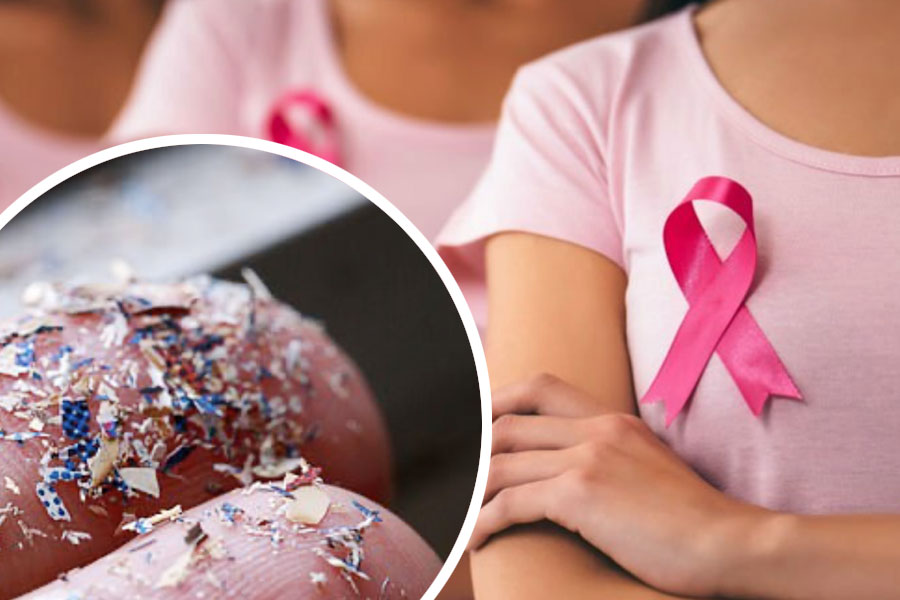
Introduction to the Risk of Breast Cancer
Breast cancer is one of the most prevalent cancers affecting women worldwide. While genetics and lifestyle choices are well-documented risk factors, emerging research has highlighted the potential role of environmental pollutants, particularly plastic-related chemicals, in elevating the risk of breast cancer. This content delves into how microplastics and chemicals found in everyday plastic products contribute to breast cancer risk.
The Connection Between Plastic Pollution and Breast Cancer
What Are Microplastics and How Do They Enter the Body?
Microplastics are tiny plastic particles measuring less than 5 millimeters in diameter. They originate from the breakdown of larger plastic waste, the shedding of synthetic fibers, and the use of certain consumer products. These particles are pervasive in the environment, with significant quantities found in water, soil, and air. But how do they make their way into the human body?
- Contaminated Food and Water: Microplastics are present in bottled water, packaged foods, and even fresh produce irrigated with contaminated water.
- Household Items: Everyday items such as plastic bottles, plates, cups, and kitchen utensils release microplastics into food and drinks.
- Airborne Particles: Microplastics are also present in the air we breathe, especially in urban areas with heavy pollution and high plastic waste levels.
These entry points expose humans to plastic particles that accumulate in organs and tissues, increasing the likelihood of adverse health effects, including breast cancer.
Chemical Composition of Plastics and Their Role in Breast Cancer
The Role of Bisphenol A (BPA) in Breast Cancer Development
One of the most well-known plastic-related chemicals, Bisphenol A (BPA), is widely used in the production of plastics and resins. BPA is found in water bottles, food containers, and other consumer products. It is classified as an endocrine disruptor, meaning it mimics estrogen—a hormone closely linked to breast cancer development.
- Estrogen Mimicry: BPA binds to estrogen receptors, triggering changes in breast tissue that may lead to tumor development.
- Persistent Presence: BPA does not degrade easily, remaining in the environment for extended periods. It enters the human body through food, water, and even skin contact.
Other Harmful Chemicals in Plastics Apart from BPA, numerous other harmful chemicals in plastics have been linked to breast cancer risk. These include:
- Phthalates: Used to make plastics more flexible, phthalates are found in food packaging, cosmetics, and personal care products. They disrupt hormonal balance and have been linked to breast cancer.
- PFAS (Per- and Polyfluoroalkyl Substances): Often referred to as “forever chemicals” due to their persistence in the environment, PFAS are found in non-stick cookware, food wrappers, and cleaning products. They are associated with an increased risk of hormonal cancers, including breast cancer.
- Parabens: These are preservatives used in personal care products like lotions, shampoos, and cosmetics. Parabens can mimic estrogen and may contribute to the development of breast cancer.
How Does Plastic Pollution Increase the Risk of Breast Cancer?
Accumulation of Microplastics in Human Tissues
When microplastics enter the body, they can accumulate in tissues and organs. Recent studies have found microplastics in human lungs, blood, and even placenta tissue. As these particles accumulate, they may cause inflammation, oxidative stress, and hormonal disruptions—all of which are potential triggers for breast cancer.
Chronic Inflammation and Oxidative Stress
Microplastics trigger an immune response when they accumulate in tissues. The immune system identifies them as foreign bodies, leading to chronic inflammation. Chronic inflammation is a known risk factor for various cancers, including breast cancer. Additionally, oxidative stress caused by reactive oxygen species (ROS) produced during the immune response can cause DNA damage, potentially leading to cancerous mutations.
Hormonal Disruption from Plastic-Related Chemicals
Endocrine-disrupting chemicals like BPA, phthalates, and parabens interfere with normal hormone function. By mimicking estrogen, these chemicals increase the risk of abnormal breast tissue growth, which can evolve into cancerous tumors over time.
Everyday Products That May Contribute to Breast Cancer Risk
Plastic Water Bottles and Containers
Plastic bottles, especially when exposed to heat, release BPA and phthalates into the water. Repeated exposure to drinking water can lead to the accumulation of these chemicals in the body.
Food Packaging and Cans
Many food cans are lined with BPA-containing resins to prevent corrosion. This lining can leach BPA into food, especially when the food is acidic or heated.
Cosmetics and Personal Care Products
Personal care products like shampoos, lotions, and cosmetics may contain parabens and phthalates. These chemicals are absorbed through the skin and enter the bloodstream, posing a risk to breast health.
How to Reduce Exposure to Harmful Plastics
Use Safer Alternatives
- Switch to Glass or Stainless Steel: Replace plastic bottles and containers with glass or stainless steel options.
- Avoid Heating Food in Plastic: Heating plastic containers releases harmful chemicals into food. Use ceramic or glass dishes instead.
Check Labels and Certifications
- Look for BPA-Free Labels: While this is a step forward, some BPA-free plastics contain BPS, which may be equally harmful.
- Choose Certified Safe Cosmetics: Opt for personal care products labeled “paraben-free” and “phthalate-free.”
Reduce Use of Packaged and Processed Foods
- Buy Fresh Produce: Fresh fruits and vegetables have lower exposure to plastic contaminants compared to pre-packaged items.
- Use Reusable Bags: Avoid single-use plastic bags and instead use reusable cloth bags for groceries.
Scientific Evidence and Studies on Plastics and Breast Cancer
The American Chemical Society’s Findings
The American Chemical Society’s research has revealed that microplastics are present in numerous everyday items, including sugar, salt, and bottled water. Their study identified over 400 harmful chemicals in plastic, many of which are linked to cancer risk.
Human Tissue Studies
Research has confirmed the presence of microplastics in human blood and lungs. This discovery underscores the systemic nature of plastic pollution’s impact on human health, emphasizing the urgent need for further investigation into its link to breast cancer.
Final Thoughts on Plastic Pollution and Breast Cancer
Breast cancer is a multifaceted disease with numerous risk factors. While genetic predisposition and lifestyle choices are critical considerations, the growing evidence pointing to the role of microplastics and plastic-related chemicals cannot be ignored. Everyday products like water bottles, food containers, and cosmetics expose humans to harmful chemicals that disrupt hormonal balance, cause oxidative stress, and trigger inflammation—all of which may lead to breast cancer.
Call to Action
Reducing exposure to plastics is a proactive step toward better health. From switching to glass containers to checking cosmetic labels, small lifestyle changes can minimize exposure to harmful chemicals. Further research is essential to understand the full impact of plastic pollution on breast cancer risk. Advocacy for stricter regulations on plastic use is also crucial in safeguarding public health.
By taking steps to reduce plastic exposure, individuals can protect themselves from potential health risks, including breast cancer. Awareness, advocacy, and education are essential to address the growing threat posed by plastic pollution.







